Podcast: Play in new window | Download
Subscribe: Apple Podcasts | RSS
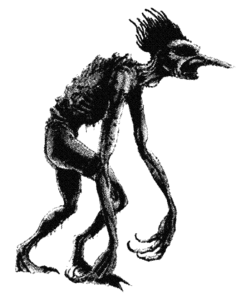 It was a foggy and rainy day in London. The year was 1844. American showman extraordinaire PT Barnum had traveled to the court of Queen Victoria with his human circus act. Barnum bowed before a dour-faced queen as he presented to her two special members of his performing troupe, a pair of microencephalic dwarves from the jungles of Mexico. The dwarves bowed and greeted her most Britannic Majesty in Spanish and in their native Maya dialect. In his introduction, Barnum claimed that the dwarves were “the last degenerate remains of a caste of high priests found, at great expense, in a lost Maya city.” As the acrobatics show in the palace commenced, the serious Queen, who would later be crowned Empress of India and would rule over one quarter of the earth’s population, WAS amused. She showed her delight openly for these tiny Mexican visitors and other nobles and notables at the English court did so, too. It was only later, in reflection in her personal diaries, that the Queen expressed a sense of sadness for these two, who she thought were relegated to a most miserable existence. While Barnum was known for his exaggeration and tall tales, there might have been a part of him that actually believed that the two Maya dwarves he was traveling with were part of a small race of magical, feral, humanlike beings who lived in the mountains and forests of Mexico and Central America. He had heard the story of the Alux from the tiny Mayan acrobats themselves.
It was a foggy and rainy day in London. The year was 1844. American showman extraordinaire PT Barnum had traveled to the court of Queen Victoria with his human circus act. Barnum bowed before a dour-faced queen as he presented to her two special members of his performing troupe, a pair of microencephalic dwarves from the jungles of Mexico. The dwarves bowed and greeted her most Britannic Majesty in Spanish and in their native Maya dialect. In his introduction, Barnum claimed that the dwarves were “the last degenerate remains of a caste of high priests found, at great expense, in a lost Maya city.” As the acrobatics show in the palace commenced, the serious Queen, who would later be crowned Empress of India and would rule over one quarter of the earth’s population, WAS amused. She showed her delight openly for these tiny Mexican visitors and other nobles and notables at the English court did so, too. It was only later, in reflection in her personal diaries, that the Queen expressed a sense of sadness for these two, who she thought were relegated to a most miserable existence. While Barnum was known for his exaggeration and tall tales, there might have been a part of him that actually believed that the two Maya dwarves he was traveling with were part of a small race of magical, feral, humanlike beings who lived in the mountains and forests of Mexico and Central America. He had heard the story of the Alux from the tiny Mayan acrobats themselves.
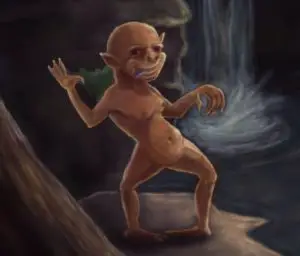 There are many cultures around the world that have myths of magical little people who live their lives outside of the view of normal humans. Gnomes, leprechauns, elves, fairies and pixies are some of the European manifestations of this phenomenon. In Mexico we also see a tradition of powerful, nearly invisible, small-statured, human-like creatures, in two areas. We see what is called the Alux – or plural, Aluxob – in the Maya heartland, encompassing the Yucatan Peninsula and modern-day Mexican states of Chiapas and Tabasco. In the eastern and southern portions of the former Aztec Empire – notably in the present-day states of Veracruz, Oaxaca and Guerrero – the “wee folk” were called Chaneques. The word chaneque comes from the Nahuatl word meaning, “those who inhabit dangerous places.” So we see the magical little people legends confined to the eastern and southern parts of the modern-day nation of Mexico. To this day, people believe in these creatures and the Alux/Chaneque phenomenon has been studied by serious Mexican and international researchers.
There are many cultures around the world that have myths of magical little people who live their lives outside of the view of normal humans. Gnomes, leprechauns, elves, fairies and pixies are some of the European manifestations of this phenomenon. In Mexico we also see a tradition of powerful, nearly invisible, small-statured, human-like creatures, in two areas. We see what is called the Alux – or plural, Aluxob – in the Maya heartland, encompassing the Yucatan Peninsula and modern-day Mexican states of Chiapas and Tabasco. In the eastern and southern portions of the former Aztec Empire – notably in the present-day states of Veracruz, Oaxaca and Guerrero – the “wee folk” were called Chaneques. The word chaneque comes from the Nahuatl word meaning, “those who inhabit dangerous places.” So we see the magical little people legends confined to the eastern and southern parts of the modern-day nation of Mexico. To this day, people believe in these creatures and the Alux/Chaneque phenomenon has been studied by serious Mexican and international researchers.
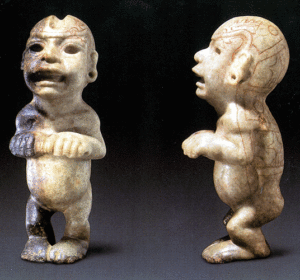 The concept of the Alux or Chaneque in Mexico may date back thousands of years. The Olmec culture, considered the “mother civilization” of ancient Mexico, flourished in the area of the gulf coast from around 1600 BC to 300 BC. Although the Olmecs had no written record, they left behind much in the form of sculpture, pottery and monumental architecture. Among the artifacts of this civilization we see depictions of dwarflike humans engaging in service to the elites or as court entertainers much like PT Barnum’s tiny Mexican duo. Some investigators believe these cultural remnants illustrate actual human dwarves who held special status in Olmec society. Others see the depictions of smaller humanoids in the archaeological record as proof that the belief in a mythical race of little people dates back thousands of years. By the time the Maya become prominent in Mexico in the few centuries before Christ we also see similar depictions as we saw with the Olmecs and we are left wondering if the archaeological “evidence” of smaller humanoids is indicative in a belief of a race of supernatural beings or if it was just the fact that human dwarves were accorded a special status in the ancient Maya world. When the Spanish encountered the living cultures of the New World, they found that the people of the Aztec and Maya lands had a powerful belief in Aluxes and Chaneques, a belief that is still strong in these areas today.
The concept of the Alux or Chaneque in Mexico may date back thousands of years. The Olmec culture, considered the “mother civilization” of ancient Mexico, flourished in the area of the gulf coast from around 1600 BC to 300 BC. Although the Olmecs had no written record, they left behind much in the form of sculpture, pottery and monumental architecture. Among the artifacts of this civilization we see depictions of dwarflike humans engaging in service to the elites or as court entertainers much like PT Barnum’s tiny Mexican duo. Some investigators believe these cultural remnants illustrate actual human dwarves who held special status in Olmec society. Others see the depictions of smaller humanoids in the archaeological record as proof that the belief in a mythical race of little people dates back thousands of years. By the time the Maya become prominent in Mexico in the few centuries before Christ we also see similar depictions as we saw with the Olmecs and we are left wondering if the archaeological “evidence” of smaller humanoids is indicative in a belief of a race of supernatural beings or if it was just the fact that human dwarves were accorded a special status in the ancient Maya world. When the Spanish encountered the living cultures of the New World, they found that the people of the Aztec and Maya lands had a powerful belief in Aluxes and Chaneques, a belief that is still strong in these areas today.
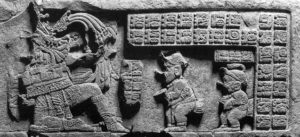 So, if people believe in these creatures and have actually seen them in some cases, what do they look like? They are generally described as fully human but in smaller form, sometimes standing no more than two feet tall and sometimes clothed. They tend to have larger eyes, which are sometimes described as a glowing red, and their noses are larger than a normal human’s. Their ears are pointed, much like those of European elves. Often they are said to wear straw hats and cloth shoes, and they carry bags made of cloth or agave cactus fiber, their “bag of tricks,” so to speak. In some legends, the alux or chaneque carry around slingshots to use in hunting or to shoot stones at disagreeable humans. Other stories of this creature give it a less friendly and more diabolical appearance. In some recent sightings in Mexico, the creature has been depicted as a hairless, almost alien-looking humanoid with a large forehead, big black eyes and claws on its feet and hands. In some legends, the creature is said to have backwards-facing feet and is covered in fur, much like the Mexican jungle-dwelling version of bigfoot called the Sisimite. Please see Mexico Unexplained episode number twelve to learn more about the Mexican bigfoot. According to some accounts, these creatures have been known to shape-shift from their diminutive humanlike form into the form of animals found in their domains.
So, if people believe in these creatures and have actually seen them in some cases, what do they look like? They are generally described as fully human but in smaller form, sometimes standing no more than two feet tall and sometimes clothed. They tend to have larger eyes, which are sometimes described as a glowing red, and their noses are larger than a normal human’s. Their ears are pointed, much like those of European elves. Often they are said to wear straw hats and cloth shoes, and they carry bags made of cloth or agave cactus fiber, their “bag of tricks,” so to speak. In some legends, the alux or chaneque carry around slingshots to use in hunting or to shoot stones at disagreeable humans. Other stories of this creature give it a less friendly and more diabolical appearance. In some recent sightings in Mexico, the creature has been depicted as a hairless, almost alien-looking humanoid with a large forehead, big black eyes and claws on its feet and hands. In some legends, the creature is said to have backwards-facing feet and is covered in fur, much like the Mexican jungle-dwelling version of bigfoot called the Sisimite. Please see Mexico Unexplained episode number twelve to learn more about the Mexican bigfoot. According to some accounts, these creatures have been known to shape-shift from their diminutive humanlike form into the form of animals found in their domains.
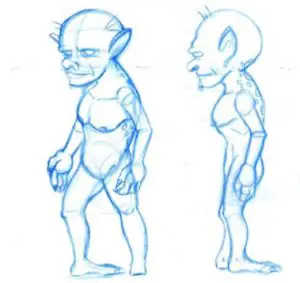 Besides the possibility of shape-shifting, Aluxes and Chaneques possess many powers that either help or serve to confound humans. According to Maya legend, aluxes pre-date humans and even pre-date the arrival of the sun to the earth, so they are accustomed to working in darkness. They sometimes work together with local spirits and gods to affect changes in their environments, like summoning rain, for example. These beings are seen as caretakers of the wild areas in which they live and look after the animals and the plants in their respective areas. Certain aluxes and chaneques inhabit forests, mountains, rivers and beaches. In the Maya area, certain aluxes may be assigned to individual cenotes or water-filled sinkholes in the limestone earth. Wherever there is a distinct natural formation, a chaneque or alux is usually nearby living its life in harmony with its surroundings. If their happy coexistence with nature is upset by human intrusion, there is often hell to pay. As the alux or chaneque may exact retribution for disrespect, great care is shown to respect the magical being before a problem arises. For example, if a farmer plants a new field of corn in a forested area, he may ask permission of the local alux or chaneque or give up offerings before he starts digging. A farmer will leave behind food or cigarettes as a kind gesture for permission to use the land. There are two famous modern-day stories in the Yucatan in which care was taken by authorities to appease the local aluxes. One has to do with the construction of the Cancun-Nizuc Bridge near the international airport. Several times during the
Besides the possibility of shape-shifting, Aluxes and Chaneques possess many powers that either help or serve to confound humans. According to Maya legend, aluxes pre-date humans and even pre-date the arrival of the sun to the earth, so they are accustomed to working in darkness. They sometimes work together with local spirits and gods to affect changes in their environments, like summoning rain, for example. These beings are seen as caretakers of the wild areas in which they live and look after the animals and the plants in their respective areas. Certain aluxes and chaneques inhabit forests, mountains, rivers and beaches. In the Maya area, certain aluxes may be assigned to individual cenotes or water-filled sinkholes in the limestone earth. Wherever there is a distinct natural formation, a chaneque or alux is usually nearby living its life in harmony with its surroundings. If their happy coexistence with nature is upset by human intrusion, there is often hell to pay. As the alux or chaneque may exact retribution for disrespect, great care is shown to respect the magical being before a problem arises. For example, if a farmer plants a new field of corn in a forested area, he may ask permission of the local alux or chaneque or give up offerings before he starts digging. A farmer will leave behind food or cigarettes as a kind gesture for permission to use the land. There are two famous modern-day stories in the Yucatan in which care was taken by authorities to appease the local aluxes. One has to do with the construction of the Cancun-Nizuc Bridge near the international airport. Several times during the  different phases of construction of the bridge, workers would return in the morning to the site to find the bridge mysteriously destroyed. Some locals suggested that the recurring destruction of the bridge was caused by a mischievous alux who didn’t want the bridge built. The government then contacted a local Maya shaman to perform a ceremony at the construction site to acknowledge the alux and to ask its permission to carry on with the construction. After the shamanic ceremony, no further incidents occurred. Today, you can see a small stone house constructed under the Cancun-Nizuc Bridge as a sign of respect for the alux where offerings are periodically left by locals who believe. In 2010 we see a similar situation with regard to an Elton John concert at the Maya archaeological site of Chichén Itzá. In a spring concert, days before the performance, the massive main stage collapsed and as there was no weather disturbances at that time, the destruction of the stage left the show promoters scratching their heads. Locals were quick to point out that the organizers of the show failed to secure the permission and blessing of the local aluxes before constructing the stage. Concerts held at this location in previous years by Placido Domingo and Sara Brightman had no problems because proper precautions were taken by calling in local shamans to appease the temperamental spirits of the location. The Elton John concert organizers then brought in a local Maya religious leader to conduct the proper ceremonies and the concert went off without a hitch.
different phases of construction of the bridge, workers would return in the morning to the site to find the bridge mysteriously destroyed. Some locals suggested that the recurring destruction of the bridge was caused by a mischievous alux who didn’t want the bridge built. The government then contacted a local Maya shaman to perform a ceremony at the construction site to acknowledge the alux and to ask its permission to carry on with the construction. After the shamanic ceremony, no further incidents occurred. Today, you can see a small stone house constructed under the Cancun-Nizuc Bridge as a sign of respect for the alux where offerings are periodically left by locals who believe. In 2010 we see a similar situation with regard to an Elton John concert at the Maya archaeological site of Chichén Itzá. In a spring concert, days before the performance, the massive main stage collapsed and as there was no weather disturbances at that time, the destruction of the stage left the show promoters scratching their heads. Locals were quick to point out that the organizers of the show failed to secure the permission and blessing of the local aluxes before constructing the stage. Concerts held at this location in previous years by Placido Domingo and Sara Brightman had no problems because proper precautions were taken by calling in local shamans to appease the temperamental spirits of the location. The Elton John concert organizers then brought in a local Maya religious leader to conduct the proper ceremonies and the concert went off without a hitch.
 As seen in the two examples and in many others, the changing temperaments of aluxes or chaneques are legendary. The creature may be playful and joyful like a child, and then be quick to anger. Because they are somewhat childlike, these creatures are said to have an affinity for children. Sightings of aluxes or chaneques are more common by children than by adults. Of course, sightings by children are often dismissed as imaginary friends or parts of made up stories, but parents who believe in these creatures often tell their children to be careful while playing in the wilder areas as there are stories of children being kidnapped by upset aluxes or chaneques.
As seen in the two examples and in many others, the changing temperaments of aluxes or chaneques are legendary. The creature may be playful and joyful like a child, and then be quick to anger. Because they are somewhat childlike, these creatures are said to have an affinity for children. Sightings of aluxes or chaneques are more common by children than by adults. Of course, sightings by children are often dismissed as imaginary friends or parts of made up stories, but parents who believe in these creatures often tell their children to be careful while playing in the wilder areas as there are stories of children being kidnapped by upset aluxes or chaneques.
 While many believe that the aluxes and chaneques have been around long before humans, there are parts of the Maya area where people believe that aluxes can actually be created by humans through shamanic ceremonies. Property owners will fashion an alux out of clay with a heart made of honey. In the creation process, the effigy must also include 9 drops of blood from the landowner. The size of this small humanlike statue is similar to that of a garden gnome familiar to most Americans. When finished, they take the clay figure to a shaman or priest who calls upon the wind, sun, rain and earth for the proper alignment to create the perfect guardian spirit that will enter the clay figure. After the ceremony the small alux statue is placed in an inconspicuous corner of the person’s property. At night, it is said, the alux comes to life. It is the responsibility of the person who created the clay figure to maintain the statue, to leave offerings and to ask the alux for permission or forgiveness. The shaman who creates the alux also has the power to counteract the being’s malevolent power. If an alux is up to bad tricks – like breaking windows, or stealing keys, for example – the shaman may intervene on behalf of the landowner by making special offerings in a ceremony specifically dedicated to troublesome aluxes. In extreme cases, especially when the alux has been blamed for diseases or pestilence, the shaman will conduct a ceremony in which the clay figurine is shattered by a big rock, thus releasing any curses of the alux or obligations to it.
While many believe that the aluxes and chaneques have been around long before humans, there are parts of the Maya area where people believe that aluxes can actually be created by humans through shamanic ceremonies. Property owners will fashion an alux out of clay with a heart made of honey. In the creation process, the effigy must also include 9 drops of blood from the landowner. The size of this small humanlike statue is similar to that of a garden gnome familiar to most Americans. When finished, they take the clay figure to a shaman or priest who calls upon the wind, sun, rain and earth for the proper alignment to create the perfect guardian spirit that will enter the clay figure. After the ceremony the small alux statue is placed in an inconspicuous corner of the person’s property. At night, it is said, the alux comes to life. It is the responsibility of the person who created the clay figure to maintain the statue, to leave offerings and to ask the alux for permission or forgiveness. The shaman who creates the alux also has the power to counteract the being’s malevolent power. If an alux is up to bad tricks – like breaking windows, or stealing keys, for example – the shaman may intervene on behalf of the landowner by making special offerings in a ceremony specifically dedicated to troublesome aluxes. In extreme cases, especially when the alux has been blamed for diseases or pestilence, the shaman will conduct a ceremony in which the clay figurine is shattered by a big rock, thus releasing any curses of the alux or obligations to it.
The alux/chaneque phenomenon garnered the attention of cryptozoologists – those who investigate and describe unknown and legendary creatures – after a farmer claimed to have captured a chaneque in the early 2000s. Although no photos exist of this incident, investigators determined that the alleged chaneque was really a howler monkey that was suffering from a type of mange and had lost all its hair. It was unknown whether or not this was just a mistake or a hoax. For those serious investigators, it might be hard to get any sort of physical proof of the existence of aluxes and chaneques. Elusive and temperamental by nature, it will be difficult to capture a creature that does not want to be found. For those who believe in these beings, no proof is necessary and no further investigation is advocated, just the proper respect is given and precautions taken to make sure the creatures are not upset. A hands-off approach may be the best solution here, with the aluxes and chaneques best left to human legends and their own little worlds.
REFERENCES – Various online sources

8 thoughts on “The Alux and the Chaneque, Mexico’s Elusive Elves”
I had one in my house…. south of Cancun
wow!
i had one at my school SOS!!!!
The dumb things people do when they can’t be productive or get bored!!
I know you probably won’t answer me, but what do you mean?
They’re real mexico have lots of duendes and they be bad they usually do braids on horses and do tricks to people.
they al.ost took me a few years ago
I believe. Shortly after arriving in the Yucatan, four unexplained losses occurred one after another over three consecutive days. First, I lost my phone in Chichen Itza. The following day, I lost my tablet in Tulum. And the third day, I lost our tickets and then left my key in the cab. My head was spinning and I felt perplexed and frustrated. Prior to this, I rarely lose things. Rarely. This wasn’t normal. A few months later, in Monterrey a shaman did a cleansing ritual over me and said he evicted a small being that was gripping my back. I have not experienced anything similar since. I behave respectfully, especially in nature.